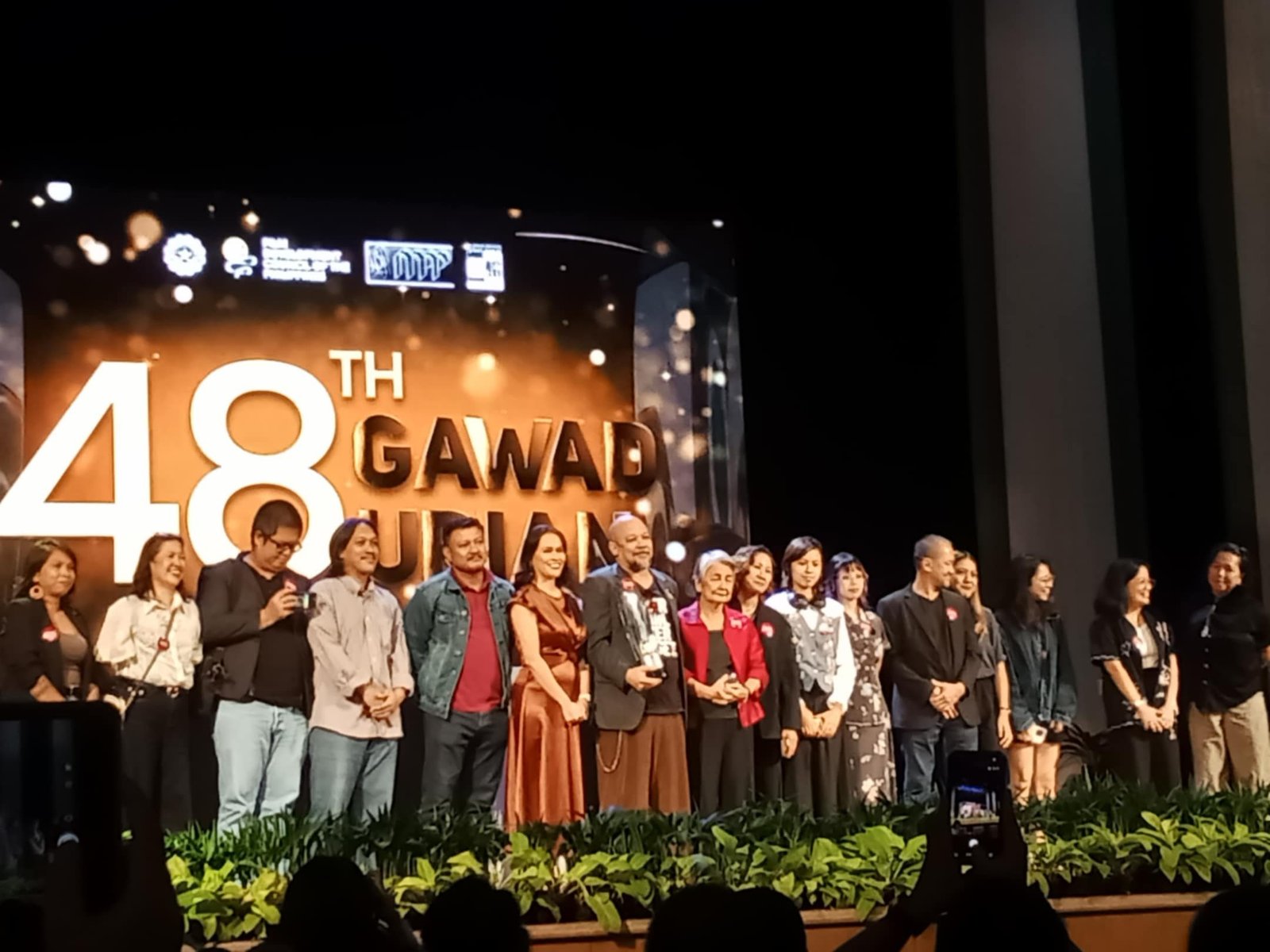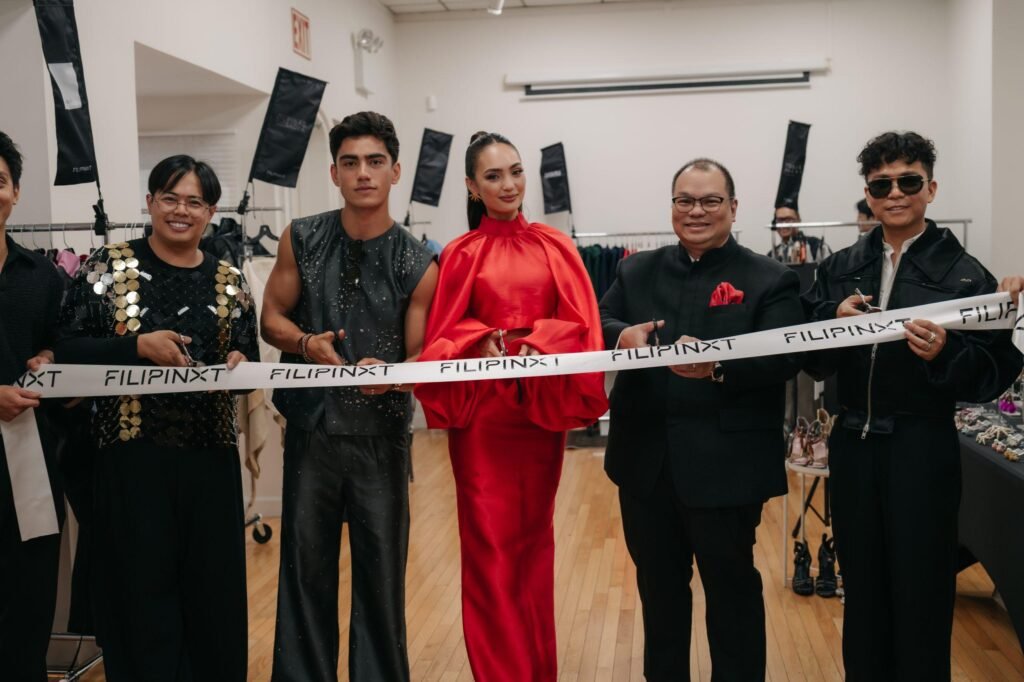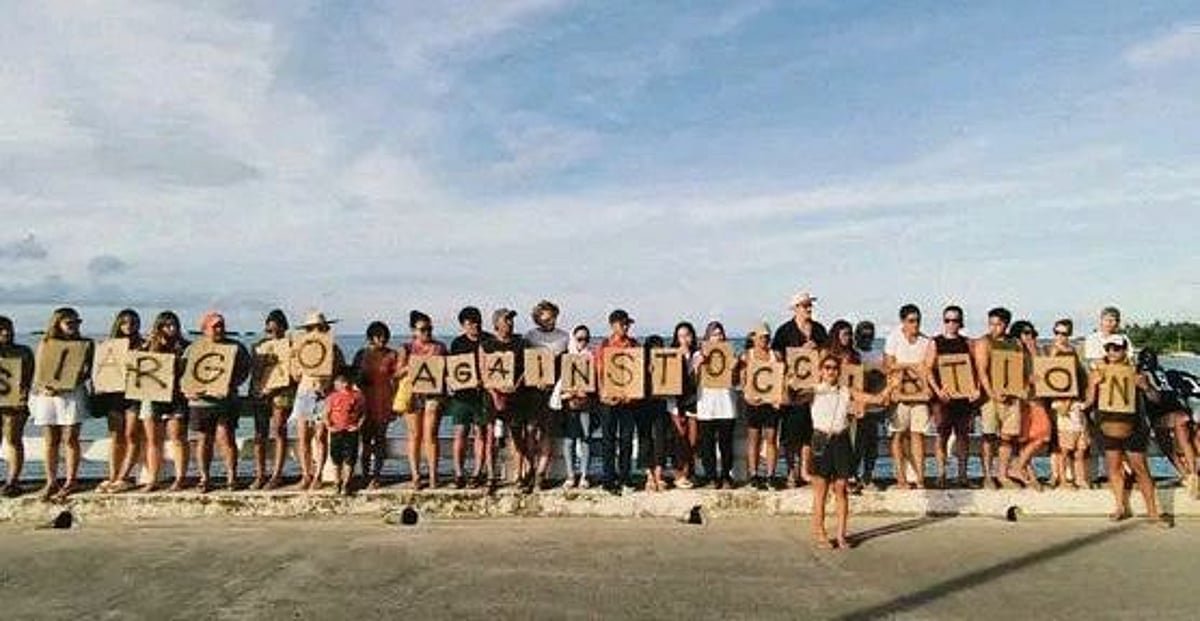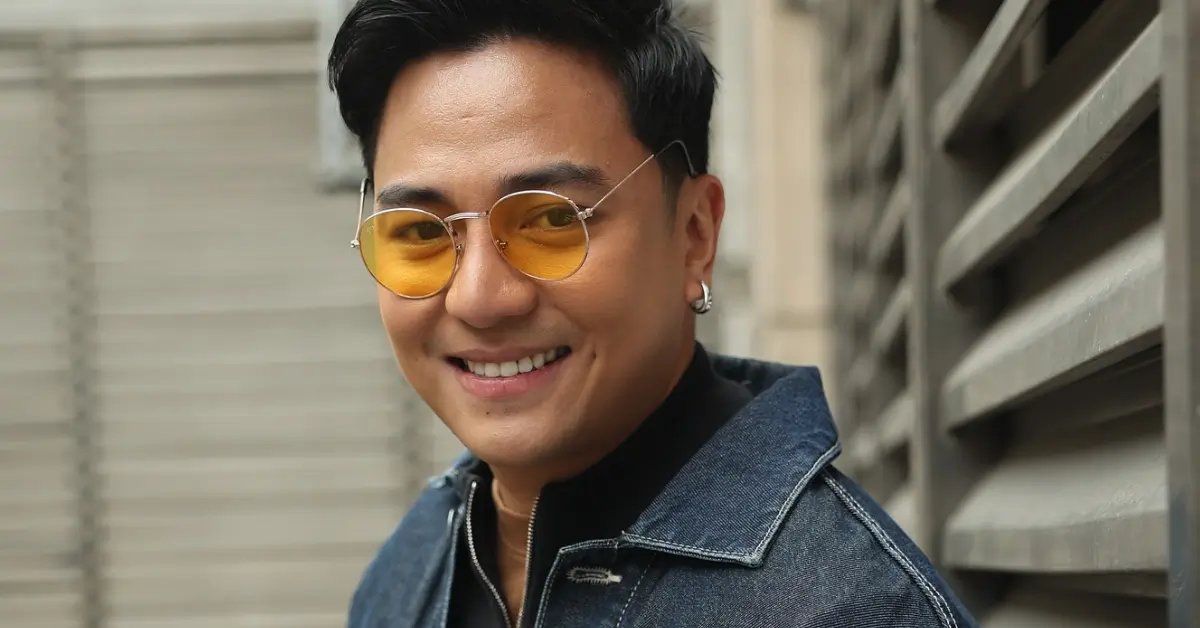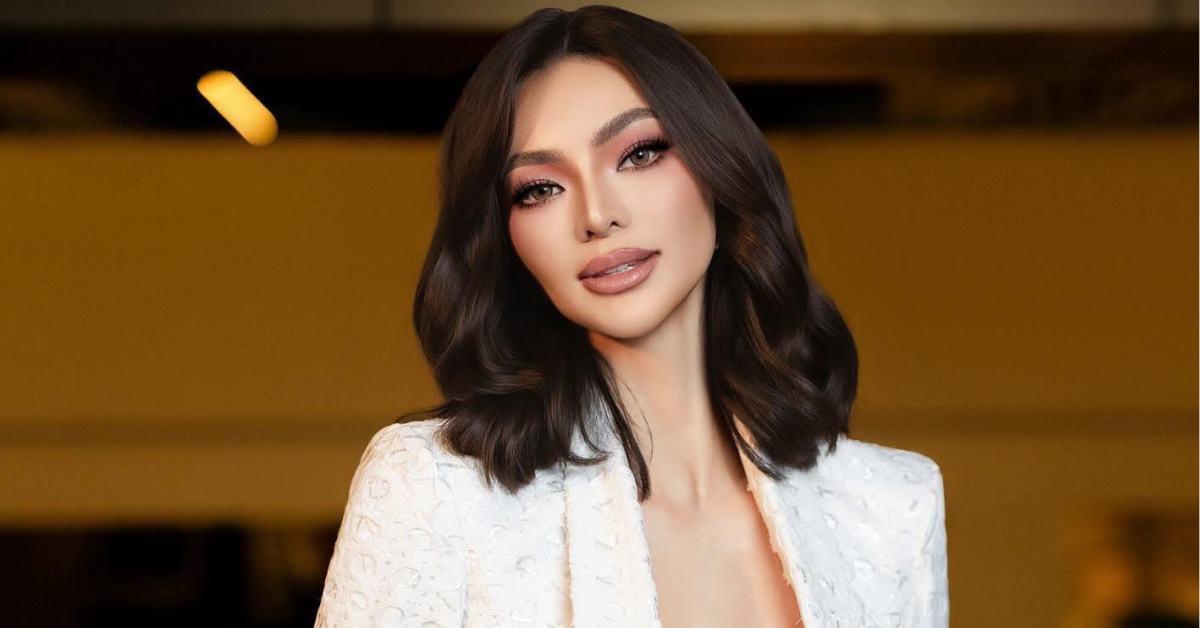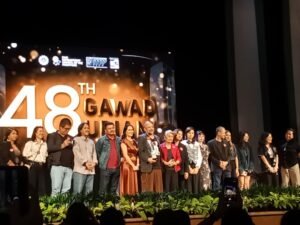From left: FILIPINXT Co-Founder and Fashion Designer Bessie Besana, Filipino-American Fencer Mitchell Saron, Miss Universe 2022 R’Bonney Nola Gabriel, Consul General Senen T. Mangalile, and FILIPINXT Co-Founder Rob Mallari D’Auria led the ribbon-cutting of the Filipinxt Marketplace. (Photo courtesy of FILIPINXT and Philippine Consulate General Office of New York)
Filipinxt’s fourth edition brings Philippine textiles and craftsmanship to the Spring/Summer 2026 shows
NEW YORK CITY — The recently concluded September 2025 edition of New York Fashion Week, which unveiled collections for Spring/Summer 2026, signaled the widening geography of global fashion. Among the season’s most compelling entries was FILIPINXT, the first all-Filipino showcase included on the official NYFW calendar. Now in its fourth edition, the platform presented a two-day program of runway shows, a curated marketplace, and cultural programming that demonstrated how Philippine design moves between heritage and contemporary relevance.
A platform with intent
Conceived by designer Bessie Besana and creative director Rob Mallari-D’Auria, FILIPINXT was built to give Filipino designers visibility on one of fashion’s most competitive stages. With the support of the Philippine Consulate General in New York, it has grown into a credible fixture on the calendar.

Consul General Senen T. Mangalile described the initiative as “a significant milestone” for Philippine fashion, calling its participants “fearless ambassadors of Filipino creativity.” He stressed that breaking into New York requires not just talent but resilience — qualities reflected in this year’s presentation.
The runway
The FILIPINXT show unfolded as a study in range, each designer advancing a distinct sensibility while collectively sketching the breadth of Philippine design today. Bessie Besana opened with sharply tailored pieces and sculptural eveningwear, garments that bore the discipline of couture yet spoke with modern clarity. Jo Ann Bitagcol followed with a conceptual turn, transforming her photography into prints and textiles that blurred the line between image and garment, memory and material.

Skeeter Labastilla-Turgut’s Pinas Sadya reimagined handwoven fabrics in silhouettes that felt unmistakably current, while Sheryl Ann Buenaventura of Style Ana leaned into versatility, offering womenswear designed for movement and urban life. Ram Silva distilled his vision into minimalist cuts and geometric lines, a counterpoint to Veejay Floresca’sinclusive bridal and eveningwear, shimmering yet accessible. Closing the sequence, Farah Abu presented sculptural accessories that commanded the runway as objects of design in their own right.
What emerged was less a single aesthetic than a dialogue — a spectrum of ideas that stretched from couture precision to conceptual experimentation, all rooted in Philippine craft.
Beyond the catwalk
The debut of the Filipinxt Marketplace gave this season broader reach. Capsule collections and collaborations were presented alongside independent labels, creating a commercial bridge between designers and buyers. Talks and masterclasses expanded the program further, exploring design practice, entrepreneurship, and heritage preservation. In pairing fashion with education and commerce, FILIPINXT showed that its ambitions extend well beyond a single runway.
New York Fashion Week in context
That FILIPINXT should find its footing in New York is no accident. Fashion week here has always been about access and positioning. Established in 1943 as Press Week by publicist Eleanor Lambert, it was designed to promote American designers at a time when Paris was unreachable during the war. What began as a pragmatic solution has since grown into an institution under the Council of Fashion Designers of America (CFDA), shaping retail calendars and cultural narratives for decades.

Though its venues have shifted — from the Bryant Park tents to Lincoln Center to dispersed locations across Manhattan — its purpose remains: to offer designers visibility, to give editors and buyers a preview of what’s next, and to assert New York’s place as a fashion capital. Its impact, however, extends further, contributing hundreds of millions of dollars each season to the city’s economy and dictating imagery that ripples from editorials to the high street.
The September 2025 shows leaned toward minimalism, bold palettes, and heritage-driven narratives. Within that conversation, FILIPINXT stood as a timely addition — not an outlier, but evidence that the industry’s center is expanding to include new geographies.
Building an ecosystem for Filipino fashion
What distinguishes FILIPINXT is its ambition to create permanence. In a season where dozens of shows compete for relevance, its fourth consecutive year demonstrates that Filipino designers are not fleeting presences but established participants.
By combining runway visibility with the Marketplace and cultural programming, the initiative offers more than a showcase. It provides scaffolding for designers to engage with international buyers and editors, while validating the artisans whose skills underpin the collections. This infrastructure — not the applause of a single show — is what ensures that Philippine fashion can sustain a global presence.
From presence to influence
The significance of FILIPINXT is not measured only by its inclusion on the NYFW calendar, but by how it uses that inclusion. On the runway, it shows that Philippine textiles, artisanal techniques, and contemporary tailoring can stand confidently beside global trends. Off the runway, it builds channels of access and recognition that give designers and artisans a durable foothold in the industry.
In this sense, FILIPINXT is no longer about novelty or token representation. It is about turning presence into influence — influence that has the capacity to reshape not only how Philippine fashion is seen, but how global fashion itself defines the voices it includes.
